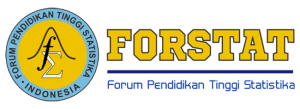Analisis Permintaan Pangan dan Nonpangan Rumah Tangga dengan Gangguan Kesehatan di Indonesia
DOI:
https://doi.org/10.34123/jurnalasks.v12i1.181Keywords:
Gangguan Kesehatan, Konsumsi, Pangan, Non Pangan, Pendapatan Rumah TanggaAbstract
Penelitian ini bertujuan menganalisis dampak tidak langsung gangguan kesehatan terhadap permintaan pangan dan non pangan rumah tangga. Dengan menggunakan data Susenas Panel tahun 2012 dan 2013 dan menerapkan two step heckman selection model untuk estimasi pendapatan dan seemingly unrelated regression estimator untuk estimasi konsumsi rumah tangga. Hasilnya menunjukkan bahwa gangguan kesehatan kepala rumah tangga akan menurunkan pendapatannya. Dampak ini akan lebih dirasakan oleh rumah tangga perempuan miskin dan bekerja di sektor pertanian. Penurunan pendapatan ini menyebabkan porsi pengeluaran konsumsi non pangan menurun, khususnya untuk pengeluaran pemeliharaan perumahan, namun pengeluaran untuk perawatan tubuh justru meningkat. Sedangkan untuk porsi konsumsi pangan tidak terpengaruh. Hal ini menunjukkan bahwa, gangguan kesehatan dapat menyebabkan penurunan tingkat kesejahteraan rumah tangga karena menyebabkan penurunan pendapatan dan peningkatan pengeluaran kesehatan. Oleh karena itu, diperlukan kebijakan yang dapat melindungi kesejahteraan rumah tangga ketika mengalami gangguan kesehatan, bisa berupa subsidi biaya kesehatan atau cash transfer.
Downloads
References
Asfaw, A., & Braun, J. von. (2004). Is Consumption Insured against Illness? Evidence on Vulnerability of Households to Health Shocks in Rural Ethiopia. Economic Development and Cultural Change, 53(1), 115–129. https://doi.org/10.1086/423255
Ashenfelter, B. Y. O., & Heckman, J. (1974). The Estimation of Income and Substitution Effects in a Model of Family Labor Supply. Econometrica, Vol. 42, No. 1 (Jan., 1974), Pp. 73-85, 42(1), 73–85.
Cochrane, J. H. (1991). A Simple Test of Consumption Insurance, 99(5), 957–976.
Faharuddin, F., Mulyana, A., Yamin, M., & Yunita Yunita. (2015). Nutrient elasticities of food consumption: the case of Indonesia. Journal of Agribusiness in Developing and Emerging Economies, 5(2), 57–75. https://doi.org/10.1108/JADEE-04-2017-0048
Faharudin, Mulyana, A., Yamin, M., & Yunita. (2015). ANALISIS POLA KONSUMSI PANGAN DI SUMATERA SELATAN 2013?: PENDEKATAN QUADRATIC ALMOST IDEAL DEMAND SYSTEM Analysis of Food Consumption Patterns in South Sumatra in 2013?: A Quadratic Almost Ideal Demand System Approach.
Genoni, M. E. (2012). Health Shocks and Consumption Smoothing: Evidence from Indonesia. Economic Development and Cultural Change, 60(3), 475–506. https://doi.org/10.1086/664019
Gertler, P., & Gruber, J. (2002). Insuring consumption against illness. American, The Review, Economic Database, Social Science.
Hoogeveen, J., Tesliuc, E., Vakis, R., & Dercon, S. (2004). A Guide to the Analysis of Risk Vulnerability and Vulnerable Groups.
Kementerian Kesehatan Republik Indonesia. (2017). Profil Kesehatan Indonesia Tahun 2016. https://doi.org/10.1111/evo.12990
Maloney, T. (1987). Employment Constraints and the Labor Supply of Married Women A Reexamination of the Added Worker Effect. The Journal of Human Resources, 22(1), 51–61. https://doi.org/10.2307/145866
Muellbauer, A. D. and J. (1980). An Almost Ideal Demand System. American Economic Association An, 70(2–3), 312–326.
https://doi.org/S0277-9536(13)00479-6 [pii]\r10.1016/j.socscimed.2013.08.027
Nguyet, N. T. N., & Mangyo, E. (2010). Vulnerability of households to health shocks: An Indonesian study. Bulletin of Indonesian Economic Studies, 46(2), 213–235. https://doi.org/10.1080/00074918.2010.486108
Poi, B. P. (2002). From the Help Desk: Demand System Estimation. The Stata Journal: Promoting Communications on Statistics and Stata, 2(4), 403–410. https://doi.org/10.1177/1536867x0200200406
Russell, S. (2004). The Economic Burden Of Illness For Households In Developing Countries: A Review Of Studies Focusing On Malaria, Tuberculosis, And Human Immunodeficiency Virus/Acquired Immunodeficiency Syndrome. The American Journal of Tropical Medicine and Hygiene, 71(2 suppl), 147–155. Retrieved from http://www.ajtmh.org/content/71/2_suppl/147
Sparrow, R., Poel, E. Van De, Hadiwidjaja, G., Yumna, A., Warda, N., & Suryahadi, A. (2014). Coping With The Economic Consequences Of Ill Health In Indonesia. Health Econ, 23(July 2013), 719–728. https://doi.org/10.1002/hec
Strauss, J., & Thomas, D. (1998). Health , Nutrition , and Economic Development, 36(2), 766–817.
Townsend, R. M. (1994). Risk and Insurance in Village India Author. The Econometric Society, 62(3), 539–591.
Wagstaff, A. (2007). The economic consequences of health shocks: Evidence from Vietnam. Journal of Health Economics, 26(1), 82–100. https://doi.org/10.1016/j.jhealeco.2006.07.001
Wang, H., Zhang, L., & Hsiao, W. (2006). Ill health and its potential influence on household consumptions in rural China. Health Policy, 78(2–3), 167–177. https://doi.org/10.1016/j.healthpol.2005.09.008
Widyanti, W., Suryahadi, A., Sumarto, S., & Yumna, A. (2010). The Relationship Between Chronic Poverty and Household Dynamics: Evidence from Indonesia. Ssrn, (January). https://doi.org/10.2139/ssrn.1537080
World Bank. (2013). Indonesia - Gender equality (English). Indonesia Gender policy brief?; no. 1. Washington DC: World Bank.















